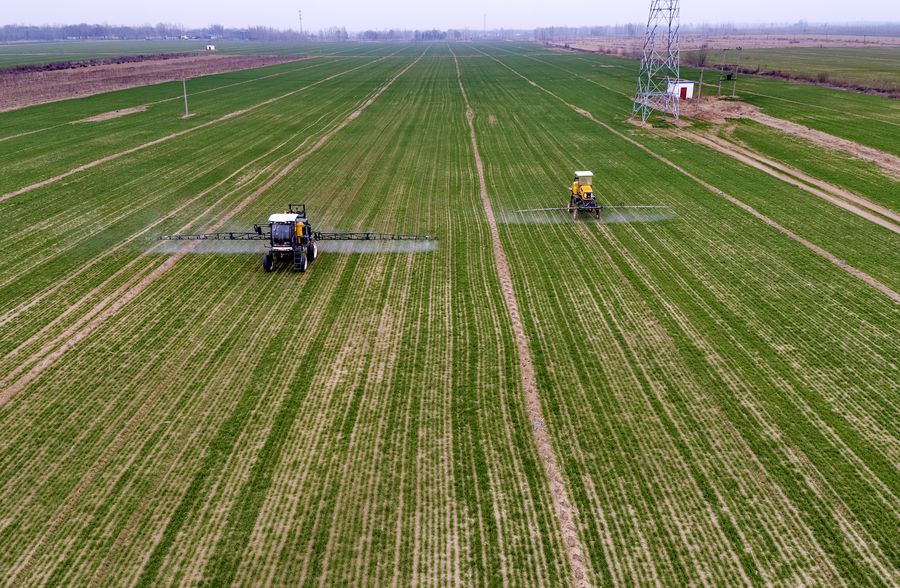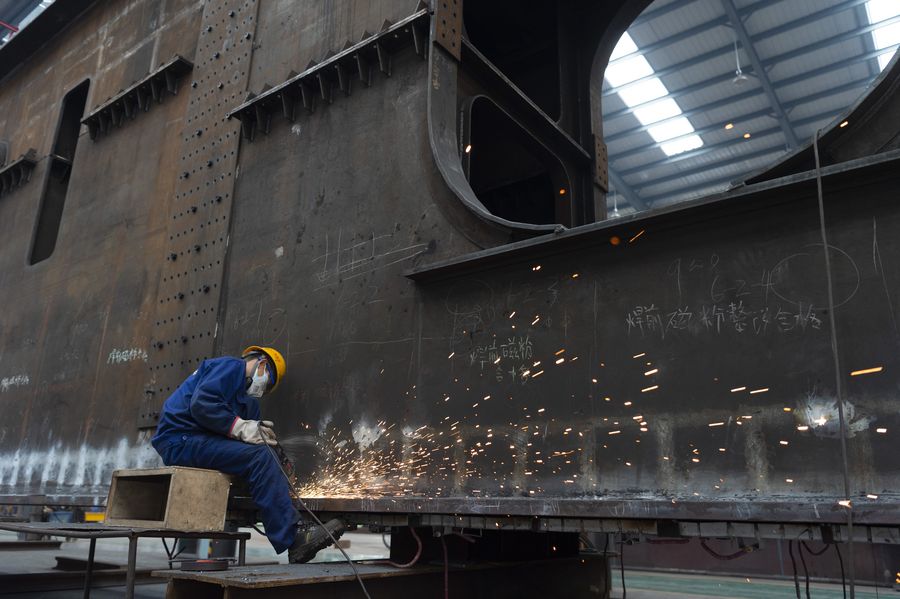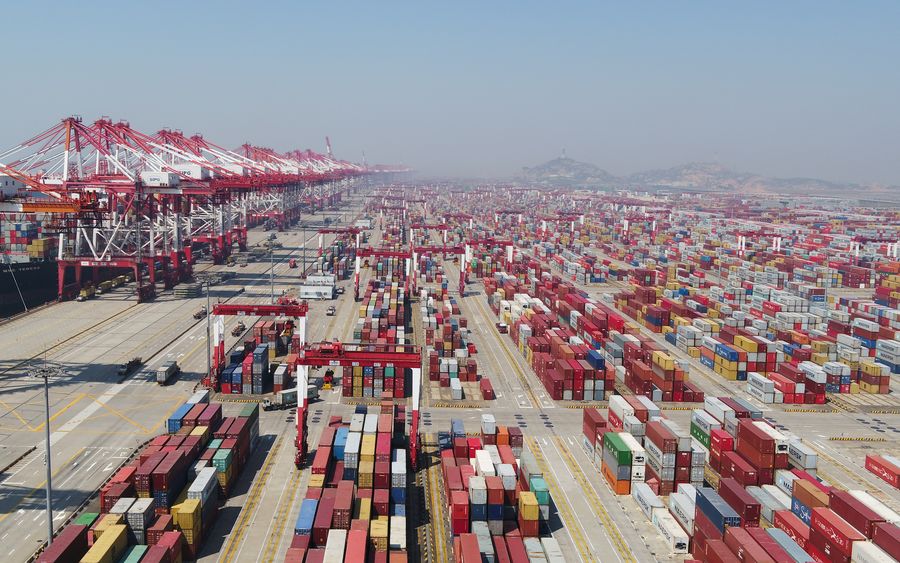
Customers enjoy meals at a barbeque restaurant in Jiangbei District of Chongqing, southwest China, March 23, 2020. (Xinhua/Wang Quanchao)
BEIJING, March 25 (Xinhua) -- With policies expediting the resumption of work and production in in China, various indicators offered clues of an ongoing economic recovery from the outbreak of the COVID-19 epidemic.
The immediate impact of the outbreak has been a sudden halt of economic activity in the first quarter, but "the good news" is that the Chinese economy is "on the way back to work," Helge Berger, the IMF's China mission chief and assistant director in the Asia and Pacific Department, told Xinhua in a recent email interview.
"Together with the policy support that is being provided, the widespread re-opening of firms and the fact that employees are returning to work makes us hopeful that we will see a strong recovery starting in Q2," he said.
As policymakers continue to work to contain the epidemic while getting the economy up, here are the latest progresses in the work and production resumption and economic recovery in China:

Aerial photo taken on March 12, 2020 shows vehicles with sprinkler system working in fields in Siying Township in Botou, north China's Hebei Province. (Xinhua/Mu Yu)
-- The Agricultural Development Bank of China, an agricultural policy bank, has provided 22.67 billion yuan (about 3.2 billion U.S. dollars) in loans to support spring farming.
About 88 percent of key enterprises and 90 percent of outlets in the agricultural materials sector have restarted business, restoring the supply to normal levels.
-- China's breeding sows in stock in 400 counties monitored by the ministry expanded by 1.7 percent month on month in February, growing for the fifth consecutive month.
Newly-born piglets in farms with over 500 pigs in stock saw a month-on-month growth of 3.4 percent, marking its first increase since September 2019.
-- The construction on 89.1 percent of 11,000 key infrastructure projects (those in hard-hit Hubei Province are not included) had been restarted as of March 20, according to Ou Hong, an official with the National Development and Reform Commission (NDRC).
Ou also noted that the country will fast-track fund allocations from the central budget and increase special-purpose bonds for local governments to bolster infrastructure construction.
-- The NDRC said last Wednesday that it will expedite the construction of "new infrastructure" projects such as 5G networks and data centers, shoring up information services for the new consumption.

A man works at a plant of the Hanjiang Heavy Industry Co. Ltd. of CR11G in Xiangyang, central China's Hubei Province, March 23, 2020. (Xinhua/Xie Jianfei)
A total of 25 provincial-level regions have put new infrastructure projects in their government work reports so far, with 21 intending to advance 5G network construction.
Leading telecom operator China Unicom said it will work with China Telecom to finish construction on 250,000 5G base stations across the country by the end of the third quarter.
-- Over 90 percent of the major industrial enterprises in China's provincial-level regions except for certain areas including Hubei, have resumed work and production thanks to region-specific restoration measures.
-- Both indicators of power generation and consumption had posted faster growth in March. National electricity output reached 17.8 billion kWh on March 16, marking a 9.9-percent rise from the 16.2 billion kWh registered at the end of February.
Data on electricity use pointed to highly recovered vitality across sectors. The nonferrous metals industry saw power use back to the normal level of last year, while the pharmaceutical, chemical and electronic industries saw their electricity use back to 90 percent of the normal level.

People shop at a supermarket in Wuhan, central China's Hubei Province, March 24, 2020. (Xinhua/Xiong Qi)
-- Food sales picked up 9.7 percent year on year in the first two months. Meanwhile, protective gear and health and sanitation products registered notable sales increases.
-- New consumption and retail models including "contactless" pick-ups and live-streaming are gaining momentum while emerging sectors such as artificial intelligence are burgeoning against the broader consumption downturn.
"The epidemic will not change the trend of long-term stability and continuous upgrade of China's consumption," said Wang Bin, an official from the Ministry of Commerce.
-- In the first two months of 2020, about 1.3 trillion yuan was raised on the stock and bond markets of stock exchanges.
The external impact on the financial market will be short-lived and will not change the trend of steady development of China's financial market, said Li Chao, vice chairman of the China Securities Regulatory Commission, citing the facts that 98 percent of listed companies have resumed work, the stock market value is at a historically low level and liquidity of the market is reasonably abundant.

Aerial photo taken on March 18, 2020 shows the container dock of Yangshan Port in Shanghai, east China. (Xinhua/Ding Ting)
-- About 67 percent of the country's key import and export firms recovered over 70 percent of production capacity. The figures did not include those in Hubei Province that has been hard-hit by the virus outbreak.
To facilitate the sector's production resumption, the country has resorted to policy tools such as export tax rebates and export credit insurances for foreign trade firms and introduced measures to help them secure orders and maintain market shares.
-- To secure overseas orders and boost cooperation, the country will support enterprises to hold negotiations and exhibitions online, the State Council executive meeting said on Tuesday, with measures to be unveiled for bolstering the international air freight capacity. ■



